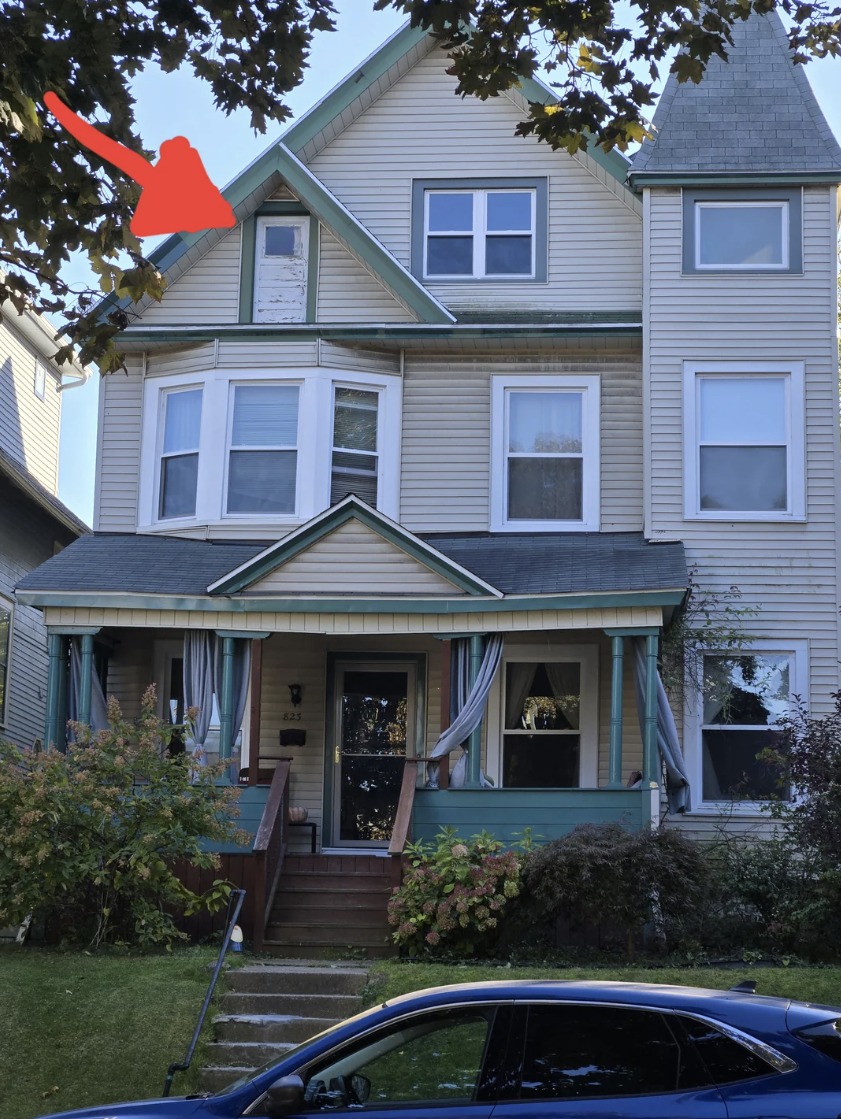In the warm stillness of a summer evening, the scent of freshly cut grass can transport you back in time—to a childhood moment of bare feet on a creaky wooden porch, chasing fireflies as if it were your full-time job. That kind of sensory memory can be powerful, especially when tied to the details of old homes, like a tiny gable door tucked up in the attic that always seemed to hold a mystery. For me, it was my aunt’s early 1900s house that captured this magic.

It had all the trimmings of a classic turn-of-the-century home: a wide wraparound porch, shuttered windows, a faint lemon oil smell, and that unforgettable little door, no more than three and a half feet high, nestled in the top floor gable. As a kid, I stared at it endlessly, wondering if it was meant for elves or secret stashes of childhood treasures. But as it turns out, those small gable doors weren’t whimsical afterthoughts. They served a very real and clever purpose, especially in a time before air conditioning and electric fans. Homes back then were designed to breathe, to work with nature instead of against it. Opening those small doors, along with a few windows, created natural cross-ventilation that helped cool the house in the summer.
Sometimes, these gable doors even opened onto what was called a sleeping porch—an outdoor or screened-in area where you could drag a cot out and doze under the stars. My grandmother often talked about how she and her sisters would haul their pillows and blankets out onto the porch, laughing themselves to sleep as lightning bugs blinked in the dark like a secret Morse code. The sound of cicadas would hum through the trees, occasionally interrupted by a distant dog barking across the fields. Today, it sounds almost poetic, maybe even absurd, but back then, it was just life. What really sets these old homes apart is that their functionality was matched by an undeniable sense of beauty. Everything was built with care and flair—gingerbread trim so fine it looked like lace, wrought iron railings with curling fern-like patterns, and vibrant paint choices that made each eave and gable look like a page out of a storybook.
Even the smallest gable doors were thoughtfully framed, often adorned with scrollwork or dainty railings that turned them into mini architectural masterpieces. Nothing felt accidental. It all belonged. And that’s why it stings a bit to see so many of these homes stripped down today—painted beige, their shutters removed, their gingerbread details lost to time or modernization. When I pass by one that’s been gutted of its charm, I can’t help but want to stop and whisper, “I remember what you used to be.” Sure, we live in a world of smart thermostats and triple-glazed windows now. Most people wouldn’t trade that for a tiny gable door and a cross breeze.
But there’s something enduring about those old design elements that still resonates. They remind us that homes once had rhythms that matched the seasons, that were built for families and airflow and afternoon naps rather than just insulation and utility bills. A gable door wasn’t just a quirky feature—it was an invitation to let the air in, to open up your home to nature and life itself. The more I learn about old houses, the more I believe their builders were onto something. They didn’t fight nature—they worked with it. They designed not just for function, but for beauty and comfort. Even the floorboards told stories, creaking and groaning with the kind of honesty that today’s laminate floors could never replicate. So the next time you spot a small gable door high up on a historic home, take a second look. Don’t dismiss it as odd or outdated. Think about who might have leaned out of it on a hot July evening, hoping for a breeze, maybe dreaming under the stars. Even if it’s sealed shut now, that little door still holds a fragment of history, a whisper from a time when homes had souls. So here’s to those strange little doors, the sleeping porches, and the beautiful, breezy designs of the past. If you’re lucky enough to have one in your life, cherish it. Maybe even open it up again, let the breeze roll in, and see what memories come drifting back.





